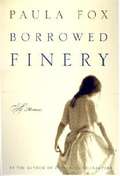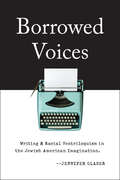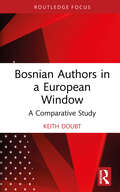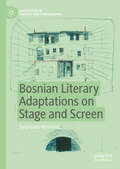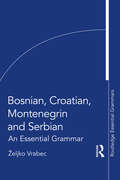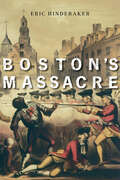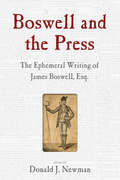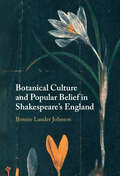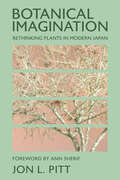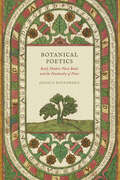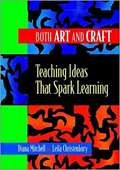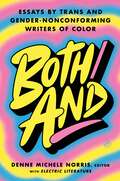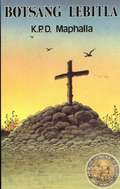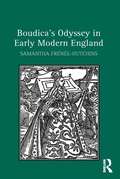- Table View
- List View
Borrowed Finery: A Memoir
by Paula FoxAn exotic, heartbreaking memoir that should finally earn Paula Fox, a distinguished novelist and children's book writer, the audience she has for decades deserved Paula Fox has long been acclaimed as one of America's most brilliant fiction writers. Borrowed Finery, her first book in nearly a decade, is an astonishing memoir of her highly unusual beginnings. Born in the twenties to nomadic, bohemian parents, Fox is left at birth in a Manhattan orphanage, then cared for by a poor yet cultivated minister in upstate New York. Her parents, however, soon resurface. Her handsome father is a hard-drinking screenwriter who is, for young Paula, "part ally, part betrayer. " Her mother is given to icy bursts of temper that punctuate a deep indifference. How, Fox wonder, is this woman "enough of an organic being to have carried me in her belly"? Never sharing more than a few moments with his daughter, Fox's father allows her to be shunted from New York City, where she lives with her passive Spanish grandmother, to Cuba, where she roams freely on a relative's sugar-cane plantation, to California, where she finds herself cast upon Hollywood's grubby margins. The thread binding these wanderings is the "borrowed finery" of the title-a few pieces of clothing, almost always lent by kind-hearted strangers, that offer Fox a rare glimpse of permanency. Vivid and poetic, Borrowed Finery is an unforgettable book which will swell the legions of Paula Fox's devoted admiriers.
Borrowed Voices: Writing and Racial Ventriloquism in the Jewish American Imagination
by Jennifer GlaserIn the decades following World War II, many American Jews sought to downplay their difference, as a means of assimilating into Middle America. Yet a significant minority, including many prominent Jewish writers and intellectuals, clung to their ethnic difference, using it to register dissent with the status quo and act as spokespeople for non-white America. In this provocative book, Jennifer Glaser examines how racial ventriloquism became a hallmark of Jewish-American fiction, as Jewish writers asserted that their own ethnicity enabled them to speak for other minorities. Rather than simply condemning this racial ventriloquism as a form of cultural appropriation or commending it as an act of empathic imagination, Borrowed Voices offers a nuanced analysis of the technique, judiciously assessing both its limitations and its potential benefits. Glaser considers how the practice of racial ventriloquism has changed over time, examining the books of many well-known writers, including Bernard Malamud, Cynthia Ozick, Philip Roth, Michael Chabon, Saul Bellow, and many others. Bringing Jewish studies into conversation with critical race theory, Glaser also opens up a dialogue between Jewish-American literature and other forms of media, including films, magazines, and graphic novels. Moreover, she demonstrates how Jewish-American fiction can help us understand the larger anxieties about ethnic identity, authenticity, and authorial voice that emerged in the wake of the civil rights movement.
Borrowings in Informal American English (Studies in English Language)
by Małgorzata KowalczykWhat do 'bimbo,' 'glitch,' 'savvy,' and 'shtick' all have in common? They are all expressions used in informal American English that have been taken from other languages. This pioneering book provides a comprehensive description of borrowings in informal American English, based on a large database of citations from thousands of contemporary sources, including the press, film, and TV. It presents the United States as a linguistic 'melting pot,' with words from a diverse range of languages now frequently appearing in the lexicon. It examines these borrowings from various perspectives, including discussions of terms, donors, types, changes, functions, and themes. It also features an alphabetical glossary of 1,200 representative expressions, defined and illustrated by 5,500 usage examples, providing an insightful and practical resource for readers. Combining scholarship with readability, this book is a fascinating storehouse of information for students and researchers in linguistics as well as anyone interested in lexical variation in contemporary English.
Boschwitz on Wellhausen: The Life, Work, and Letters of a Jewish Scholar in Nazi Germany (Critical Studies in the Hebrew Bible)
by Paul Michael KurtzJulius Wellhausen was a monumental figure in the field of biblical studies, but his work has been denounced as antisemitic in recent years. This book offers a nuanced view of Wellhausen’s scholarship through a critical edition and translation of one of the last doctoral dissertations by a Jew in Nazi Germany: Friedemann Philipp Boschwitz’s Julius Wellhausen: Motives and Measures of His Historiography.Boschwitz presents a deep, holistic analysis of Wellhausen's thought, examining his work on ancient Judaism, early Christianity, and formative Islam within the framework of comparative religion and cultural history. He also situates Wellhausen in the context of German intellectual history, tracing the influence of Johann Gottfried Herder on Wellhausen and Wellhausen on Friedrich Nietzsche. In addition, Paul Michael Kurtz provides incisive commentary and archival materials that highlight Boschwitz’s scholarly achievements and open new vistas onto Jewish intellectual history. Piecing together fragments from private letters and official documents, Kurtz shows the formidable challenges Boschwitz faced as a Jewish scholar under a discriminatory political and academic regime. The correspondence also reveals Boschwitz’s rich social life and connections with major émigré thinkers such as Salo Baron, Leo Strauss, and Karl Löwith. Boschwitz on Wellhausen brings together a fascinating wealth of published and unpublished material to tell an original story of great importance to scholars of the Hebrew Bible, the New Testament, and the Quran as well as those interested in German Judaism and modern philosophy.
Bosnian Authors in a European Window: A Comparative Study (Routledge Focus on Literature)
by Keith DoubtThe study compares three Bosnian authors with three European titans: The poet Mak Dizdar to Homer, the novelist Meša Selimović to Fyodor Dostoevsky, and the novelist Ivo Andrić to Leo Tolstoy. The purpose is to move the appreciation of the writing of the most important Bosnian writers of the 20th century closer to the European literary community and to the wholeness of the literary phenomenon. Secondary literature on the Bosnian authors is too narrow, focusing on their ethnic heritages and the Balkan milieu in which they write and missing something essential to a critical appreciation of their works. The study creates not only affinities but, more importantly, amitiés between the authors. The discipline of comparative literature reveals what is missing in the secondary literature, namely, a vision of the literary universe, inclusive and comprehensive.
Bosnian Literary Adaptations on Stage and Screen (Adaptation in Theatre and Performance)
by Sanja Garić-KomnenićBosnian Literature on Stage and Screen aims to reconcile theoretical approaches with theatrical and cinematic practices by examining two adaptations based on works by the Bosnian author Meša Selimović. The book is informed by scholarship in film and theatre adaptation theories, and is grounded in a comparative approach that focuses on the interplay of sign systems and codes unique to screen and stage. The book looks closely at two adaptations: a screen adaptation of the novel The Fortress and a stage adaptation of the novel The Island.
Bosnian, Croatian, Montenegrin and Serbian: An Essential Grammar (Routledge Essential Grammars)
by Željko VrabecBosnian, Croatian, Montenegrin and Serbian: An Essential Grammar is intended for beginners and intermediate students who need a reference that explains grammar in straightforward terms. It covers all the main areas of the modern single BCMS grammatical system in an accessible way, and free from jargon. When linguistic terminology is used, it is explained in layman’s terms, the logic of a rule is presented simply and near parallels are drawn with English. This book covers all the grammar necessary for everyday communication (reaching B1 and B2 of the CEFR, ACTFL Intermediate-Intermediate- Mid). The book comprises of extensive chapters on all parts of speech, the creation of different word forms (endings for cases in nouns and adjectives, case forms for pronouns, tenses, verbal modes, verbal aspect etc.) and their uses in sentences. Each rule is illustrated with numerous examples from everyday living language used in Bosnia-Herzegovina, Croatia, Montenegro and Serbia. It is a unique reference book in English aimed at this level of language study that treats BCMS as a single grammar system, explaining and highlighting all the small differences between the four variants of this polycentric language.
Boss Ladies, Watch Out!: Essays on Women, Sex and Writing
by Terry CastleA new collection of essays on literature and sexuality by one of the wittiest and most iconoclastic critics writing today.
Boston's Massacre
by Eric HinderakerAn in-depth history of the pivotal event in Colonial America, as well as its causes, competing narratives, and evolving memories.On the night of March 5, 1770, British soldiers fired into a crowd gathered in front of Boston’s Custom House, killing five people. Denounced as an act of unprovoked violence and villainy, the event that came to be known as the Boston Massacre is one of the most familiar incidents in American history, yet one of the least understood. Eric Hinderaker revisits this dramatic episode, examining in forensic detail the facts of that fateful night, the competing narratives that molded public perceptions at the time, and the long campaign afterward to transform the tragedy into a touchstone of American identity.When Parliament stationed two thousand British troops in Boston beginning in 1768, resentment spread rapidly among the populace. Steeped in traditions of self-government and famous for their Yankee independence, Bostonians were primed to resist the imposition. Living up to their reputation as Britain’s most intransigent North American community, they refused compromise and increasingly interpreted their conflict with Britain as a matter of principle. Relations between Britain and the North American colonies deteriorated precipitously after the shooting at the Custom House, and it soon became the catalyzing incident that placed Boston in the vanguard of the Patriot movement.Fundamental uncertainties about the night’s events cannot be resolved. But the larger significance of the Boston Massacre extends from the era of the American Revolution to our own time, when the use of violence in policing crowd behavior has once again become a pressing public issue.Praise for Boston’s MassacreGeorge Washington Prize FinalistWinner of the Society of the Cincinnati Prize“Fascinating . . . Hinderaker’s meticulous research shows that the Boston Massacre was contested from the beginning . . . [Its] meanings have plenty to tell us about America’s identity, past and present.” —Wall Street Journal“Hinderaker brilliantly unpacks the creation of competing narratives around a traumatic and confusing episode of violence. With deft insight, careful research, and lucid writing, he shows how the bloodshed in one Boston street became pivotal to making and remembering a revolution that created a nation.” —Alan Taylor, author of American Revolutions“Seldom does a book appear that compels its readers to rethink a signal event in American history. It’s even rarer . . . to accomplish so formidable a feat in prose of sparkling clarity and grace. Boston’s Massacre is a gem.” —Fred Anderson, author of Crucible of War
Boswell and the Press: Essays on the Ephemeral Writing of James Boswell
by Paul Tankard Allan Ingram Nigel Aston James J. Caudle Jennifer Preston Wilson Donald J. Newman Terry Seymour Celia BarnesBoswell and the Press is the first sustained examination of James Boswell’s ephemeral writings—his journalism, pamphlets, and broadsides—which, taken together, prove worthy of critical study. These new essays enhance our comprehension of Boswell’s interests and proclivities as an author and refine our understanding of how the print environment in which he worked influenced what he wrote and how he wrote it. Contributors further illuminate a print culture in the throes of transformation, providing useful fodder for historians of journalism and publishing in eighteenth- century Britain, while offering up rich new material for seasoned Boswell scholars.
Boswell's Enlightenment
by Robert ZaretskyThroughout his life James Boswell struggled to fashion a clear account of himself, but try as he might he could not reconcile the truths of his era with those of his religious upbringing. Few periods better crystallize this turmoil than 1763-1765, the years of his Grand Tour and the focus of Robert Zaretsky's thrilling intellectual adventure.
Bot-mimicry in Digital Literary Culture: Imitating Imitative Software (Elements in Publishing and Book Culture)
by Malthe Stavning ErslevThis Element traverses the concept and practice of bot mimicry, defined as the imitation of imitative software, specifically the practice of writing in the style of social bots. Working as both an inquiry into and an extended definition of the concept, the Element argues that bot mimicry engenders a new mode of knowing about and relating to imitative software – as well as a distinctly literary approach to rendering and negotiating artificial intelligence imaginaries. The Element presents a software-oriented mode of understanding Internet culture, a novel reading of Alan Turing's imitation game, and the first substantial integration of Walter Benjamin's theory of the mimetic faculty into the study of digital culture, thus offering multiple unique lines of inquiry. Ultimately, the Element illuminates the value of mimicry – to the understanding of an emerging practice of digital literary culture, to practices of research, and to our very conceptions of artificial intelligence.
Botanical Culture and Popular Belief in Shakespeare's England
by Bonnie Lander JohnsonThe Shakespearean stage offered London playgoers a glimpse of the illiterate and rural plant cultures rapidly disappearing from their increasingly urban and sophisticated lives. The same cultures also circulated in popular texts offstage: bawdy tree ballads, botanical tales, almanacs and accounts of kitchen physic. Here Bonnie Lander Johnson argues that, while Shakespeare's plants offered audiences a nostalgic vision of childhood, domestic education and rural pastimes, this was in fact done with an ironic gesture that claimed for illiterate culture an intellectual relevance ignored by the learned and largely Protestant realm of print. Addressing a long-standing imbalance in early modern scholarship, she reveals how Shakespeare's plays – and the popular, low botanical beliefs they represent – engaged with questions usually deemed high, literate and elite: theological and liturgical controversies, the politics of state, England's role in Elizabethan naval conflict and the increasingly learned realm of medical authority.
Botanical Entanglements: Women, Natural Science, and the Arts in Eighteenth-Century England
by Anna K. SagalTo this day, women face barriers in entering scientific professions, and in earlier eras the challenges were greater still. But in Botanical Entanglements, Anna Sagal reveals how women’s active participation in scientific discourses of the eighteenth century was enabled by the manipulation of social and cultural conventions that have typically been understood as limiting factors. By taking advantage of the intersections between domesticity, femininity, and nature, the writers and artists studied here laid claim to a specific authority on naturalist subjects, ranging from botany to entomology to natural history more broadly.Botanical Entanglements pairs studies of well-known authors—Eliza Haywood, Charlotte Lennox, Maria Edgeworth, and Charlotte Smith—with authors and artists who receive less attention in this context—Priscilla Wakefield, Maria Jacson, Elizabeth Blackwell, Henrietta Maria Moriarty, and Mary Delany—to offer a nuanced portrait of the diverse strategies women employed to engage in scientific labor. Using socially acceptable forms of textual production, including popular periodicals, didactic texts, novels, illustrated works, craftwork, and poetry, these women advocated for more substantive and meaningful engagement with the natural world. In parallel, the book also illuminates the emotional and physical intimacies between women, plants, and insects to reveal an early precursor to twenty-first-century theorizing of plant intelligence and human-plant relationships. Recognizing such literary and artistic "entanglement" facilitates a more profound understanding of the multifaceted relationship between women and the natural world in eighteenth-century England.
Botanical Imagination: Rethinking Plants in Modern Japan (The Environments of East Asia)
by Jon L. PittBotanical Imagination explores the complicated legacy and enduring lure of plant life in modern Japanese literature and media. Using critical plant studies, Jon L. Pitt examines an unlikely group of writers and filmmakers in modern Japan, finding in their works a desire to "become botanical" in both content and form. For nearly one hundred years, a botanical imagination grew in response to moments of crisis in Japan's modern history.Pitt shows how artists were inspired to seek out botanical knowledge in order to construct new forms of subjectivity and attempt to resist certain forms of state violence. As he follows plants through the tangled histories of imperialism and state control, Pitt also uncovers the ways plants were used in the same violence that drove artists to turn to the botanical as a model of resistance in the first place. Botanical Imagination calls on us to rethink plants as significant but ambivalent actors and to turn to the botanical realm as a site of potentiality.
Botanical Poetics: Early Modern Plant Books and the Husbandry of Print
by Jessica RosenbergDuring the middle years of Queen Elizabeth’s reign, the number of books published with titles that described themselves as flowers, gardens, or forests more than tripled. During those same years, English printers turned out scores of instructional manuals on gardening and husbandry, retailing useful knowledge to a growing class of literate landowners and pleasure gardeners. Both trends, Jessica Rosenberg shows, reflected a distinctive style of early modern plant-thinking, one that understood both plants and poems as composites of small pieces—slips or seeds to be recirculated by readers and planters.Botanical Poetics brings together studies of ecology, science, literary form, and the material text to explore how these developments transformed early modern conceptions of nature, poetic language, and the printed book. Drawing on little-studied titles in horticulture and popular print alongside poetry by Shakespeare, Spenser, and others, Rosenberg reveals how early modern print used a botanical idiom to anticipate histories of its own reading and reception, whether through replanting, uprooting, or fantasies of common property and proliferation. While our conventional narratives of English literary culture in this period see reading as an increasingly private practice, and literary production as more and more of an authorial domain, Botanical Poetics uncovers an alternate tradition: of commonplaces and common ground, of slips of herbs and poetry circulated, shared, and multiplied.
Both Art and Craft: Teaching Ideas that Spark Learning
by Leila Christenbury Diana MitchellThis lively, readable text offers countless practical ideas for student activities in the areas of literature, reading, writing, and thematic units. From the exploration of ghostly themes, to the writing of resumes for heroes, to devising yearbook entries or Web pages for famous literary characters, _Both Art and Craft_ provides the middle school or secondary school classroom teacher a wealth of creative activities and strategies for the day, the week, or the semester. An annotated list of teaching resources offers readers further alternatives.
Both/And: Essays by Trans and Gender-Nonconforming Writers of Color
by Denne Michele Norris Electric LiteratureFrom Denne Michele Norris and Electric Literature, a vital anthology of essays by trans and gender-nonconforming writers of color, sharing stories of joy, heartbreak, rage, and self-discovery.Featuring seventeen essays by trans people of color—spanning writers, scientists, actors, activists, and drag queens—Both/And explores what it means to live as a trans or gender nonconforming person of color today.Acclaimed authors Akwaeke Emezi, Tanaïs, and Meredith Talusan share their stories alongside activist and organizer Raquel Willis and RuPaul’s Drag Race star Peppermint, as well as a host of rising literary talent. Each story is told with honesty, authenticity, and beauty. A nonbinary molecular biologist has nightmares about their estranged father transitioning. A writer revisits a casual hook-up when she discovered her womanhood. And a woman vacations with her wife in Hawaii, where she gets in touch with the fire goddess within. These stories depict real trans lives from trans points of view, at a time when these perspectives are most urgent and valuable.Inspired by Electric Literature’s groundbreaking series and edited by the first Black, openly trans editor-in-chief of a major literary publication, Both/And uplifts and amplifies stories of queer joy, heartbreak, rage, and self-discovery.
Botsang Lebitla: UBC Contracted (Sesotho Ser.)
by K.P.D. MaphallaThe death of his family in tragic circumstances leaves a tiny baby bereft. Raised in a hostile, loveless household by his aunt and uncle, the protagonist grows up to be bitter, hard and distrustful. His dogged, almost obsessive pursuit of his roots is fruitless, and he realises that only his family's graves can reveal the truth. But a grave is always silent. Further horrifying events provoke his vengeful fury ... Bold and passionate, this is a gripping tale of suspense and revenge.
Botsang Lebitla: UBC Uncontracted (Sesotho Ser.)
by K.P.D. MaphallaThe death of his family in tragic circumstances leaves a tiny baby bereft. Raised in a hostile, loveless household by his aunt and uncle, the protagonist grows up to be bitter, hard and distrustful. His dogged, almost obsessive pursuit of his roots is fruitless, and he realises that only his family's graves can reveal the truth. But a grave is always silent. Further horrifying events provoke his vengeful fury ... Bold and passionate, this is a gripping tale of suspense and revenge.
Bottoms Up and the Devil Laughs: A Journey Through the Deep State
by Kerry HowleyA NATIONAL BOOK CRITICS CIRCLE AWARD FINALIST • A NEW YORK TIMES TOP TEN BOOK OF THE YEAR • A VANITY FAIR BEST BOOK OF THE YEAR&“Riveting and darkly funny and in all senses of the word, unclassifiable.&” – The New York TimesA wild, humane, and hilarious meditation on post-privacy America—from the acclaimed author of ThrownWho are you? You are data about data. You are a map of connections—a culmination of everything you have ever posted, searched, emailed, liked, and followed. In this groundbreaking work of narrative nonfiction, Kerry Howley investigates the curious implications of living in the age of the indelible. Bottoms Up and the Devil Laughs tells the true story of intelligence specialist Reality Winner, a lone young woman who stuffs a state secret under her skirt and trusts the wrong people to help. After printing five pages of dangerous information she was never supposed to see, Winner finds herself at the mercy of forces more invasive than she could have possibly imagined.Following Winner&’s unlikely journey from rural Texas to a federal courtroom, Howley maps a hidden world, drawing in John Walker Lindh, Lady Gaga, Edward Snowden, a rescue dog named Outlaw Babyface Nelson, and a mother who will do whatever it takes to get her daughter out of jail. Howley&’s subjects face a challenge new to history: they are imprisoned by their past selves, trapped for as long as the Internet endures. A soap opera set in the deep state, Bottoms Up and the Devil Laughs is a free fall into a world where everything is recorded and nothing is sacred, from a singular writer unafraid to ask essential questions about the strangeness of modern life.
Bottoms Up: Queer Mexicanness and Latinx Performance (Sexual Cultures)
by Xiomara Verenice Cervantes-GomezProposes a queer way to be in the world and with othersInvoking queer aesthetics, ethics, and politics, Bottoms Up explores a sexual way to be with others while living with loss. Xiomara Cervantes-Gómez demonstrates how aesthetic representations of sex—namely, bottoming—function as allegorical paradigms, revealing the assemblages of violence that have constituted the social, cultural, and political shifts of Mexico and US Latinx culture from 1950 to the present.With playful, theoretically nuanced prose, Cervantes-Gómez builds upon queer of color theory and continental philosophy to present the “bottom” as a form of relational performance, which she terms “pasivo ethics.” The argument develops through a series of compelling case studies, including a series of novels by Octavio Paz and Luis Zapata that trace the position of the bottom in Mexican nationalist literature; the forms of exposure, risk, and proximity in the performance work of artist Lechedevirgen Trimegisto; a reading of violence and the erotic in the work of artist Bruno Ramri; and reading artists such as Yosimar Reyes, Yanina Orellana, and Carlos Martiel as they build a framework of sexual inheritance that carries the traumas of Mexicanness into the diaspora.Through a broad archive rooted in hemispheric Latinx performance, Bottoms Up considers how sexual and political power are bound up with each other in the shaping of Mexicanness. Placing particular emphasis on questions of queer and trans Mexican embodiment, the book explains how Mexicanness is constituted through discourses of exposure.
Boudica's Odyssey in Early Modern England
by Samantha Frénée-HutchinsThis diachronic study of Boudica serves as a sourcebook of references to Boudica in the early modern period and gives an overview of the ways in which her story was processed and exploited by the different players of the times who wanted to give credence and support to their own belief systems. The author examines the different apparatus of state ideology which processed the social, religious and political representations of Boudica for public absorption and helped form the popular myth we have of Boudica today. By exploring images of the Briton warrior queen across two reigns which witnessed an act of political union and a move from English female rule (under Elizabeth I) to British/Scottish masculine rule (under James VI & I) the author conducts a critical cartography of the ways in which gender, colonialism and nationalism crystallised around this crucial historical figure. Concentrating on the original transmission and reception of the ancient texts the author analyses the historical works of Hector Boece, Raphael Holinshed and William Camden as well as the canonical literary figures of Edmund Spenser, William Shakespeare and John Fletcher. She also looks at aspects of other primary sources not covered in previous scholarship, such as Humphrey Llwyd’s Breuiary of Britayne (1573), Petruccio Ubaldini’s Le Vite delle donne illustri, del regno d’Inghilterra, e del regno di Scotia (1588) and Edmund Bolton’s Nero Caesar (1624). Furthermore, she incorporates archaeological research relating to Boudica.
Bounce: Rap Music and Local Identity in New Orleans
by Matt MillerOver the course of the twentieth century, African Americans in New Orleans helped define the genres of jazz, rhythm and blues, soul, and funk. In recent decades, younger generations of New Orleanians have created a rich and dynamic local rap scene, which has revolved around a dance-oriented style called "bounce." Hip-hop has been the latest conduit for a "New Orleans sound" that lies at the heart of many of the city's best-known contributions to earlier popular music genres. Bounce, while globally connected and constantly evolving, reflects an enduring cultural continuity that reaches back and builds on the city's rich musical and cultural traditions. In this book, the popular music scholar and filmmaker Matt Miller explores the ways in which participants in New Orleans's hip-hop scene have collectively established, contested, and revised a distinctive style of rap that exists at the intersection of deeply rooted vernacular music traditions and the modern, globalized economy of commercial popular music. Like other forms of grassroots expressive culture in the city, New Orleans rap is a site of intense aesthetic and economic competition that reflects the creativity and resilience of the city's poor and working-class African Americans.
Bouncy Mouse: Vowel Combinations Oi, Ou (Let's Read Together ®)
by Barbara deRubertisLet&’s Read Together books merge rhyme and vowel sounds in delightfully zany stories kids will want to read again and again. Each of the 15 books in this classic series by award-winning author/educator Barbara deRubertis will give your child a jumpstart on reading success."Story lines are silly and inventive, and recall Dr. Seuss&’s Cat in the Hat for the building of rhythm and rhyming words." —School Library JournalBouncy Mouse bothers his Dad, until his noisy musical antics lead to stardom! (This easy-to-read story features the "oi" and "ou" vowel combinations.)
